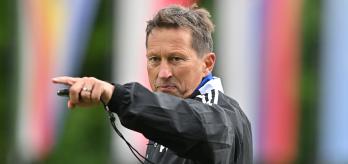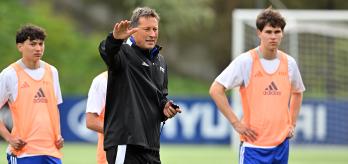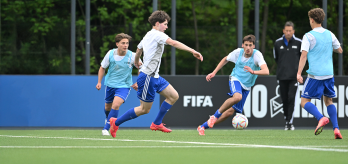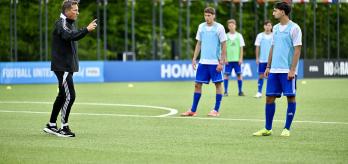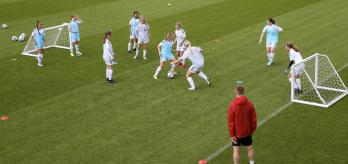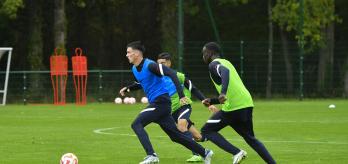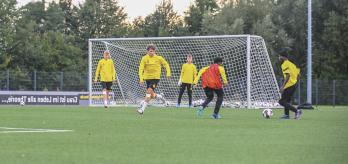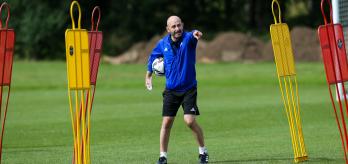In Part 1, we introduced a high-tempo, possession-based drill that primes players physically, mentally and tactically for the demands of Schmidt’s football. Now, in Part 2, we build on that foundation with a second tactical activation exercise — one that retains the same core principles but adds more complexity and realism.
The setup
This variation involves three teams of six players and two neutral players, spread across three zones. Each round begins with one team in each zone, and the middle team serving as defenders. Just like in the first version, teams can score in two ways:
- By completing 10 passes and switching play successfully, rewarding structured possession and vertical progression.
- By winning the ball and transitioning it quickly to the opposite zone, reinforcing the idea that defending is a launchpad for attack.
Added Complexity
Like the first activity, this is more than just a warm-up. It is a tactical activation — a focused, high-intensity drill designed to instil the core behaviours that define Schmidt’s playing identity:
- Forward-thinking play: Players are encouraged to find vertical passes and move the ball with intent.
- Quick transitions: The drill is built on rapid changes of possession, teaching players to switch mindsets instantly.
- High-intensity defending: Defenders apply immediate pressure, mirroring the aggressive pressing seen in Schmidt’s teams.
- Purposeful ball recoveries: Rewarding defensive actions that lead to attacking opportunities.
Compared to Part 1, this version adds greater complexity both in and out of possession due to the larger number of players and more structured team shapes.
In Possession: A More Realistic Build-up Scenario
The attacking team now consists of seven players (six, plus one neutral), requiring greater structure and more strategic ball movement. This setup begins to resemble real match situations, especially during the build-up phase, with a back four and three central players. A central figure in this structure is the neutral player, who acts as a pivot.
Their responsibilities include:
- Retaining possession under pressure
- Facilitating ball circulation
- Initiating vertical progression
To perform effectively, the neutral player must:
- Constantly adjust their position to remain available
- Scan the field to anticipate pressure
- Decide when to turn, switch, or recycle the ball
This role supports two key strategies that mirror how teams break down a press in real matches:
Out of Possession: More Synchronised Pressure
The pressing team now defends with three players instead of two, demanding greater coordination, communication, and clarity of roles. Though outnumbered, the defenders can be highly effective if they “hunt in a pack”, isolating the ball carrier, cutting off passing options, and pressing in unison.
To succeed, the pressing trio must:
- Defend as a compact triangle, shifting as the ball moves
- Stay 5–8 metres apart to support one another and cover lanes
- Isolate the ball carrier, prevent switches, and force turnovers
This mirrors the demands of the game, where pressing as a unit is essential to sustain pressure and win the ball high up the pitch. Each defender has a specific role within the triangle:
These roles rotate continuously as the ball moves, emphasising the importance of communication, anticipation and coordinated movement, which are all hallmarks of Schmidt’s defensive structure.
Stay tuned for more insights into how Roger Schmidt’s training ground becomes the blueprint for his bold, high-octane football.





